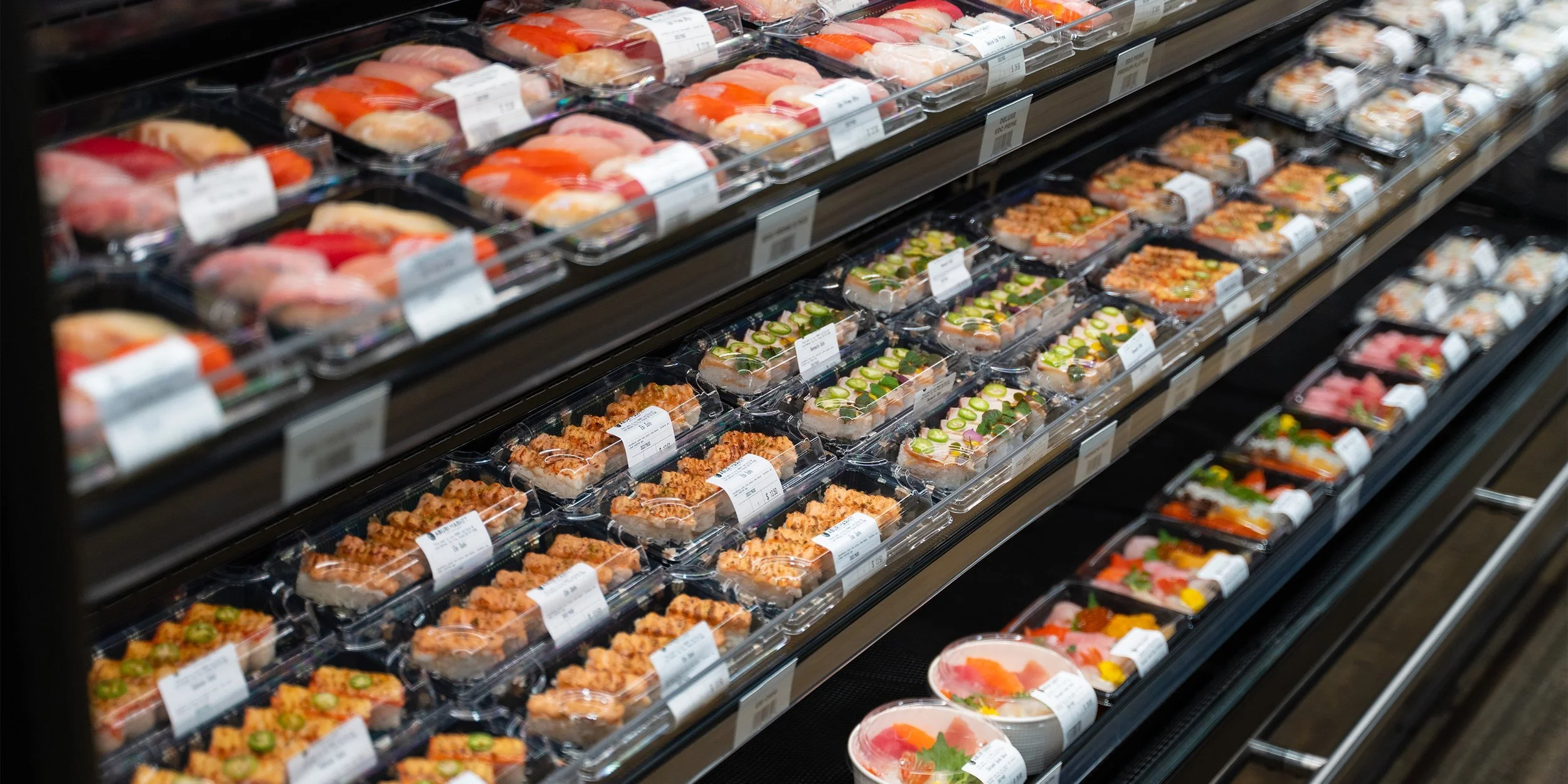From flame-torched sushi to Japanese groceries, ABURI Market broadens focus beyond food
The Japanese concept of washuko is at the heart of the new culinary destination
Aburi Market.
THE NEW ABURI Market is unlike anything in the region. The Japanese grocery and lifestyle store in Ambleside is the brainchild of Seigo Nakamura, an entrepreneur who got his start in the food industry in his early 20s in southern Japan, taking over his father’s struggling sushi business. He turned it into a growing gourmet sushi chain, TORA, and went on to found ABURI Restaurants Canada, which operates Miku, Minami, and Gyoza Bar, in addition to eateries in Toronto.
Nakamura also introduced Vancouver to aburi (flame-seared) pressed sushi, which consists of chewy, seasoned rice topped with creamy French-inspired sauces and a thin slice of fresh seafood or meat.
Now, he’s expanding beyond restaurants with ABURI Market, the company’s first premium Japanese washoku concept. Included on UNESCO’s Intangible Cultural Heritage of Humanity list, washoku is “a social practice based on a set of skills, knowledge, practice and traditions related to the production, processing, preparation and consumption of food”.
The 4,000-plus square foot space at 1350 Marine Drive has several “stations” to explore, including fresh grab-and-go sushi, sashimi, and rolls; made-to-order bowls and chirasi bowls; all kinds of bento; a build-your-own ramen section. There are fruit sauces and spicy condiments; chili-shrimp dumplings and glass jars of teriyaki fish; octopus and oyster onigiri; frozen ramen kits and broth; mochi ice cream and Japanese-style baked sponge cake; In Jelly multivitamins, minerals, and protein; juices, sodas, snacks, candies… The list goes on, with more than 1,000 different types of imported products.
Shojin, or Japanese vegan cuisine, has a strong presence. Beans and vegetables are prepared in such a way as to resemble the appearance and flavour of meat in various dishes.
Seigo Nakamura.
ABURI Market.
The Iwate Prefecture A5 wagyu case is a draw in itself for those who have an appetite for the buttery, fatty, melt-in-your-mouth meat (and for those with fat wallets, too; it goes for $300 per kilogram). Wagyu is produced mainly from the Japanese kuroge (black) cow and must be graded by the Japanese Meat Grading Association. A5 is the highest grade, achieved by ranking high in terms of marbling, colour, and fat and for having just the right firmness and texture.
Outside of culinary arts, there are elegant hand fans and chopsticks on display as if in a gallery, and hand-painted Arita-Yaki plateware, which dates back to the early 1600s, when the use of pottery stones and coloured paint to create delicate porcelain wares was discovered in Arita. The town began to export finished products to Europe through the Dutch East India Company in the 1650s, and it’s said the plateware was traded at the same value as pure gold. Traditional techniques and craftsmanship have been passed down through the generations.
There are T-shirts, tote bags, table cloths, napkins, and other items emblazoned with designs by Hideki Kimura, whom ABURI commissioned and who’s known as the “rock star painter” from Kyoto. A graduate of the Kyoto City University of Arts Department of Design, Kimura organized Too Much, Japan’s first rock music festival; he has created more than 180 murals in Japan and abroad.
It’s all in keeping with Nakamura’s overarching goal: “I don’t just want a business,” he says in a release. “I want to create a culture and a community.”
ABURI Market.




















